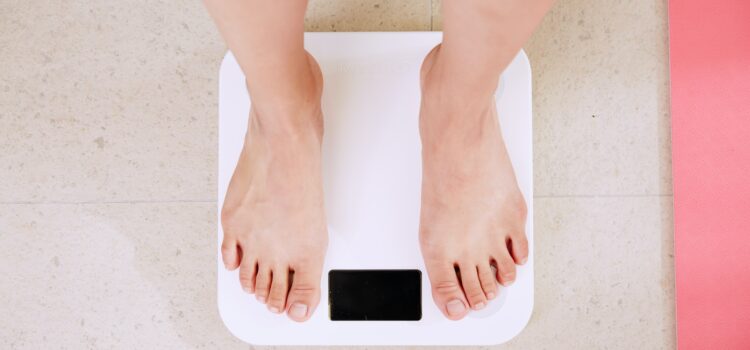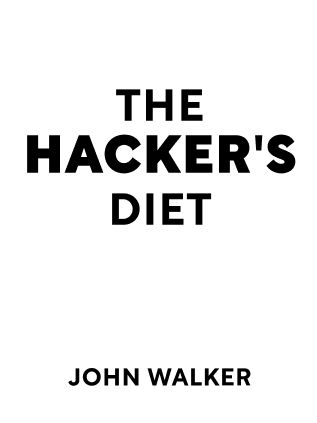

This article is an excerpt from the Shortform book guide to "The Hacker's Diet" by John Walker. Shortform has the world's best summaries and analyses of books you should be reading.
Like this article? Sign up for a free trial here .
What is The Hacker’s Diet about? What is the key, according to its author John Walker, to successful weight loss?
The Hacker’s Diet was written by John Walker, founder of software company Autodesk. This is an engineer’s approach to weight loss, described in terms of control systems, feedback loops, measurement noise reduction, and practical problem-solving.
Here is a breakdown of Walker’s advice from The Hacker’s Diet.
The Hacker’s Diet
How do you lose weight? Eat less than you’re burning each day.
- Everyone has a different daily calorie requirement based on height, weight, and activity level. Very roughly, the average man burns around 2000 calories, and the average woman around 1500 calories. Determine yours with this calculator.
Simple doesn’t mean easy. Like anything else in life, successfully losing weight requires:
- A fixation on the goal you want to achieve
- An understanding of what’s required to achieve the goal
- Developing a rational plan to meet your goal
- Carrying out the plan
- Willpower and a high tolerance for pain
Calories In/Calories Out
The Hacker’s Diet says that the way to lose weight is to eat fewer calories than you’re burning each day.
A pound of fat contains about 3500 calories. Losing a pound of fat requires you to burn 3500 more calories than you eat. There’s no way around this. Fad dieting techniques like keto, paleo, intermittent fasting, etc. are all merely different ways of restricting your calorie intake.
Likewise, eating an extra 250 calories a day causes you to gain a pound in 2 weeks. Or 26 pounds a year. And this just requires one more helping at dinner, one beverage per day.
For purposes of weight loss, you could eat 1500 calories of butter a day and still lose weight. It’s not what you eat, it’s how much of it.
The Eat Watch
Imagine that you had a watch that told you when to eat. When it flashed Eat, you would eat. When you reached your calorie limit for the meal or the day, the watch would stop flashing, and you’d stop eating.
People who have been skinny their entire lives have perfectly tuned Eat Watches. When they eat over their caloric requirement for the meal, they simply stop eating. Eating past this point becomes unbearably uncomfortable.
People who gain weight easily have broken Eat Watches. Cutting calories is painful; eating excess calories is easy. It might even be easy for you to keep eating past the point of discomfort.
But this doesn’t mean you’re doomed for life. Many of us are born with bad vision, but you can get glasses to correct your problem. If you have a broken Eat watch, you can build your own artificial one, by tracking your weight and calories.
Tracking Weight
If you’ve ever tried to lose weight and measure your body, the path your body takes is startling.
- When you first start dieting, you seem to lose 5 pounds in 2 days. Wow! What progress!
- Then it quickly slows to a trickle. This is the plateau of misery.
- You get antsy and frustrated, so you have a cheat meal. You stand back on the scale, and you weigh 4 pounds more. My god! All your progress is lost!
- As you weigh yourself through the days, your spirits rise and fall with your readings. Plateaus are crushing (you’re enduring so much pain! How could you barely have lost any weight!) while the temporary losses are short-lived.
The reason for this wild fluctuation is water, influenced by salt intake. This is NOT solid body mass. Because a pound of fat requires 3500 calories, there is simply no way to gain 3 pounds of fat in a day.
At a rate of undereating 500 calories per day (which is already viscerally difficult), you lose less than 0.2 pounds of fat a day. This signal is largely lost in the noise of day-to-day weight fluctuations.
The solution to this is the exponentially weighted moving average (EWMA). This takes a moving average to smooth out daily fluctuations, and weighs recent data more strongly than past data.
The trend of the EWMA shows weight loss per week, which can then be calculated into calorie deficit per day.
Meal Planning
Pre-planning meals — how much you eat AND when — gives you a reliable daily calorie intake. If you eat only what you plan to, then you’re guaranteed to achieve your goal. (Again, simply, not necessarily easy).
You would never invest in a company that sets no budgets and whose strategy is “spend whatever we feel like day to day, and hope it’ll work out in the long run.” Not only would this be more likely to fail than methodical planning, there’d be no way to measure actual performance against goals to figure out the problems. “Winging it” in relation to your eating target is the same.
Tips:
- Plan your meals ahead of time — specific amounts at specific times. Don’t eat any more than this.
- Pre-planning reduces the pain of hunger, since you know you’ll have your next meal at a specific time.
- The easy way out is to eat pre-prepared foods, like microwavable meals or liquid shakes. These reduce prep time and make calorie planning easy.
- Measure or weigh quantities of what you eat. Highly caloric foods contain more calories in less mass than than you think (eg 20g of nuts is way less than you might guess, but has 115 calories).
The Weight Loss Journey
If you have little knowledge of calorie content of foods, and tracking weight is new to you, it may be wise to spend a couple of weeks just getting used to the actions — monitoring your daily weight and measuring your calorie spend. Once you’ve become accustomed to your weight fluctuations and the procedures, you’ll be better equipped to execute your plan.
Start your diet in a regular period when you have a regular schedule, when you have time to adjust to the diet.
The first 3 days are the hardest as your body adjusts to burning fat. You’ll feel cold, weak, irritable, tired, and a constant gnawing hunger. It is this bad, and it’s not good to sugarcoat this — better for you to know what will come and handle it better. But rest assured, it will never feel worse than this. The hunger softens from an aching pain you think about constantly, to a minor annoyance that becomes a fact of life.
Start your weight loss during a regular period of time when you have a regular schedule, ideally of at least 2 weeks of “normal life.” Maintaining a weight loss plan benefits from momentum and “getting in the groove.” During a vacation, extensive travel, or holidays, it’s hard to maintain the discipline your plan requires.
Once you hit your target weight, give yourself some buffer by getting your average weight trend line by 2 pounds under your target weight.
Then, once you’re ready to stop your weight loss, transition back to maintenance calories slowly, perhaps adding 100-200 calories back per week. Adding back too much at once might cause a weight spike.
Perfect Weight Forever
Because your eating control system is broken, you need to continue with tracking weight and meal planning indefinitely. People yo-yo between weight loss and weight gain because they fall back into their previous bad habits.
Set hard limits to your weight that require dialing back calories. 2 pounds of your weight target is a soft wall requiring calorie adjustment; 5 pounds of your weight target is a hard wall requiring immediate resumption of your previous dieting plan.
Luckily it gets easier with more time — you gain an intuition for calorie content, you don’t overeat or binge as much, and your body adjusts.

———End of Preview———
Like what you just read? Read the rest of the world's best book summary and analysis of John Walker's "The Hacker's Diet" at Shortform .
Here's what you'll find in our full The Hacker's Diet summary :
- An engineer’s approach to weight loss
- Why losing weight is so hard even though it's so simple
- What you have to do to maintain your ideal weight for the rest of your life






